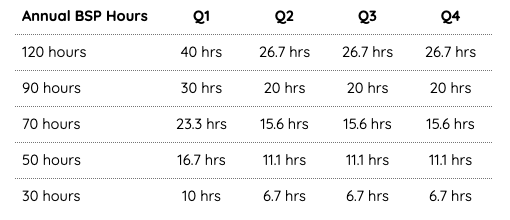Front-Loading Behaviour Support Funding: A Smarter Way to Plan Under Section 33
At Ivy Psychology, we are committed to providing timely, compliant, and person-centred behaviour support services for all NDIS participants. With the recent Section 33 amendments to the NDIS Behaviour Support funding framework, there is now greater flexibility to allocate Improved Relationships – Behaviour Support funding in ways that reflect the realities of service delivery.
We are pleased to share our recommended funding structure that aligns with these changes and supports participants to receive effective behaviour support right from the start of their plan.
Why Front-Loaded Funding Matters
The first three months of behaviour support typically involve intensive work:
Functional behaviour assessments
Stakeholder consultation
Behaviour Support Plan (BSP) development
Submission of Restrictive Practice Authorisation applications
This phase is critical for setting up safe, compliant, and effective supports.
Subsequent quarters generally involve a lower level of intensity, focused on:
Ongoing monitoring and data review
Updating strategies as participant needs evolve
Stakeholder training and collaboration
A flat or evenly distributed funding model often leads to delays, non-compliance, and missed opportunities to meet participant needs early in the plan period.
Recommended Funding Breakdown
To align with legislative timeframes and deliver timely outcomes, we recommend the following model:
Quarter 1 (Months 1–3): Allocate one-third (1/3) of the annual BSP funding
Quarters 2–4 (Months 4–12): Allocate the remaining two-thirds (2/3) evenly across the final three quarters
This approach ensures there is sufficient funding upfront to allow for assessments and BSP development to be completed within the required timeframes set by the NDIS Quality and Safeguards Commission.
This funding approach aligns with industry recommendations following the Section 33 amendments. Similar models have been proposed by sector leaders to promote compliance and service continuity.
Example: Annual BSP Hours Breakdown
Note: Decimal values can be rounded slightly at the planning stage to suit individual participant needs.
What We Are Asking Planners To Do
We kindly request that NDIS planners and partners in the community:
✅ Apply a front-loaded model to all BSP allocations
✅ Allocate 1/3 (one third) of funding in Quarter 1
✅ Distribute 2/3 (two thirds) across Quarters 2–4
✅ Use this model regardless of the total hours approved
This strategy promotes service continuity, improves safety and responsiveness, and ensures alignment with Section 33 legislative requirements.
Need Help with Plan Wording or Advice?
Ivy Psychology is here to support NDIS planners, support coordinators, and participants in navigating these changes. Please contact us directly if you would like suggested plan wording or additional documentation to support this approach.
Together, we can ensure behaviour support plans are not just written—but implemented effectively, early, and with the right resources.


